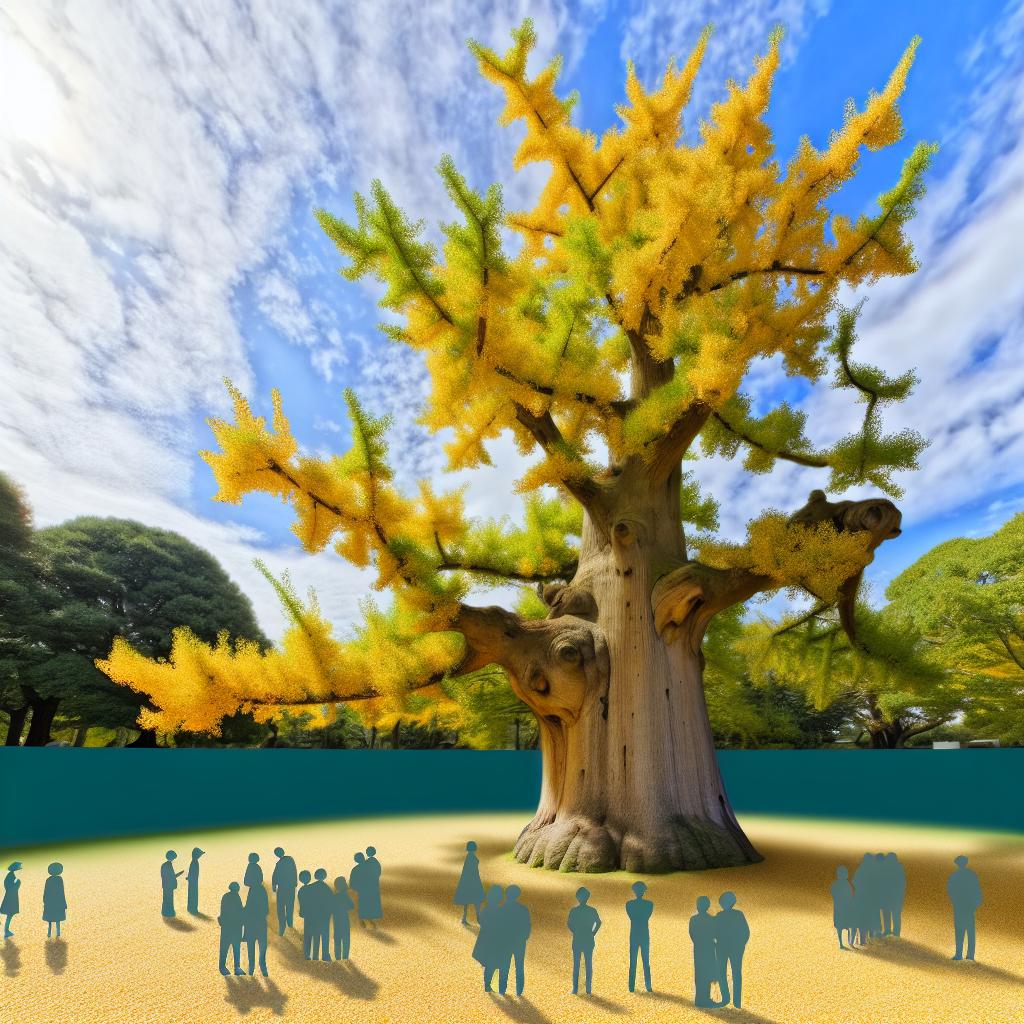The Symbolism of Ginkgo Biloba
The Ginkgo biloba, often referred to as the ginkgo tree, is among the oldest living tree species on Earth. Known for its remarkable ability to survive and thrive over millennia, this tree has become a powerful symbol of longevity and strength across various cultures. Its historical presence and unique characteristics provide fascinating insights into its significance and how it has been perceived throughout human history.
Historical Context
Ginkgo trees, often called “living fossils,” have existed for over 200 million years. They have literally witnessed the rise and fall of dinosaurs, which is a testament to their remarkable resilience. The survival of these ancient trees through numerous global events, including nuclear explosions such as the Hiroshima bombing, underscores their hardiness. The ginkgo trees in Hiroshima were among the few living entities that withstood the blast and continued to grow thereafter. This incredible capacity not only highlights their biological strength but also their symbolic role as an emblem of durability and renewal amidst destruction.
Symbolism in Different Cultures
The symbolism of the ginkgo tree varies among different cultures, each interpreting its significance in unique ways based on cultural narratives and beliefs:
China and Japan: In these countries, the ginkgo is deeply revered not only for its antiquity but also for its mysterious beauty. The tree is renowned for its ability to live for several centuries, sometimes spanning over a thousand years. It is ceremoniously linked to notions of peace, hope, and timelessness. In Japanese temples and shrines, the presence of ginkgo trees is quite common, symbolizing the enduring nature of faith and spirituality.
Western Culture: In the Western cultural perspective, the ginkgo is appreciated for its distinctive fan-shaped leaves and its exemplary resilience. It frequently appears in art and literature as a metaphor for endurance and health. The ginkgo’s symbolic presence extends to various media, making it a common motif in both contemporary and classical representations. Its unique characteristics and the story of its survival serve as powerful reminders of nature’s persistent vigor.
The Ginkgo Leaf and Its Meaning
The ginkgo leaf, characterized by its unique fan shape, often appears in artistic and architectural motifs, symbolizing growth and harmonious duality. The leaf is typically depicted with two distinctive lobes, which many view as emblematic of balancing forces, such as life and death, or strength and flexibility. This interpretation resonates deeply across cultural contexts, where balance and duality are central themes in philosophical and spiritual thought. The ginkgo leaf thus stands as a versatile symbol, representing diverse but interconnected aspects of existence.
Ginkgo Biloba in Modern Times
In contemporary times, Ginkgo biloba has gained substantial attention for its purported health benefits, particularly in cognitive enhancement and memory support. This has led to the commercial availability of supplements and herbal products containing extracts from the tree. The notion that it might aid in improving mental functions and providing support against age-related cognitive decline is widely circulated. However, modern research endeavors continue to explore and test these claims, often yielding mixed or inconclusive results.
While some studies suggest potential benefits, others call for caution, emphasizing the need for further scientifically controlled research to validate these claims effectively. For those interested in exploring scientific reviews and analyses, credible sources like the National Center for Biotechnology Information offer comprehensive insights into ongoing research findings and hypotheses.
Despite the ongoing debates surrounding its medicinal properties, the ginkgo’s symbolic significance remains unchallenged. Its resilience and longevity continue to inspire individuals and cultures alike, serving as enduring symbols of nature’s inherent strength and the capacity for renewal and survival, even under the harshest conditions. The enduring presence of the ginkgo also offers an important reflection on the intersection of nature and human life, illuminating our persistent quest for understanding and harmony with the world around us.
Moreover, beyond its botanical and cultural significance, the ginkgo tree holds a broader ecological importance. As an urban tree, it is prized for its tolerance to pollution and diverse climates, making it a staple in city landscapes around the globe. Its leaves turn a vibrant yellow in the fall, offering aesthetic appeal to urban areas, which further integrates the ginkgo into everyday human environments. This utilitarian aspect, combined with its profound symbolism, underscores its unique status among trees and its irreplaceable place within ecosystems and communities.
In conclusion, the ginkgo stands as a remarkable and multifaceted entity—a testament to resilience, a symbol rich in cultural associations, a subject of scientific interest, and a valued component of urban landscapes. As we continue to study and appreciate the Ginkgo biloba, it remains a silent yet powerful reminder of the complex interplay between the natural world and human civilization, constantly urging us to look to nature for inspiration and guidance in our pursuit of endurance and understanding.

